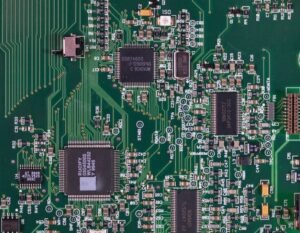Neural Network Optimizers
Neural network optimizers play a crucial role in training artificial neural networks, allowing them to learn from data and make accurate predictions. These optimizers fine-tune the weights and biases of the network’s connections to minimize the error between predicted and actual outputs. In this article, we will explore different types of optimizers commonly used in deep learning models and understand how they enhance the efficiency and performance of neural networks.
Key Takeaways:
- Neural network optimizers fine-tune network parameters to minimize prediction errors.
- There are various types of optimizers suited for different deep learning scenarios.
- Choosing the right optimizer is essential for improving model accuracy and training efficiency.
Artificial neural networks consist of layers of interconnected nodes or neurons, each performing calculations on the incoming data. These calculations involve multiplying the inputs by weights, summing them up, and applying an activation function to produce an output. Initially, the network’s weights are assigned random values, and the training data is fed through the network. The optimizer then adjusts these weights, using optimization algorithms, to make the network’s predictions closer to the true values.
**One popular optimizer is the Stochastic Gradient Descent (SGD), which iteratively adjusts the weights using the gradients of the loss function with respect to each weight.** SGD updates the weights after processing each training example or a batch of examples, making it computationally efficient. However, SGD may get stuck in local minima or take longer to converge to the global minimum if the learning rate is set too high.
Another widely used optimizer is **Adam, an adaptive learning rate optimization algorithm**. Adam combines the advantages of both momentum and RMSprop optimizers. It adapts the learning rate for each weight based on the magnitude of recent gradients and keeps track of the weighted averages of both gradients and their squared values. This adaptive learning rate helps Adam converge faster and perform effectively on different types of neural networks.
Comparing Different Optimizers:
| Optimizer | Key Features |
|---|---|
| Stochastic Gradient Descent (SGD) | Efficient, but may get stuck in local minima. |
| Adam | Adaptive learning rate, performs well on various networks. |
| Adagrad | Adapts learning rates individually for each parameter. |
Recently, the **Rectified Adam (RAdam)** optimizer has gained attention due to its ability to yield improved generalization performance compared to SGD and Adam. RAdam adapts the learning rate based on exponential moving averages of the gradient and second-moment statistics. It overcomes the drawbacks of the other optimizers by dynamically adjusting the adaptive learning rate during training.
A key consideration when selecting an optimizer is the **learning rate**, which determines the step size at each weight update. If the learning rate is too high, the optimizer might overshoot the minimum, causing erratic behavior during training. If it is too low, the optimizer might get stuck in local minima or converge very slowly. Different optimizers benefit from different learning rate settings, and finding the optimal learning rate often requires experimentation.
Optimizers Comparison:
| Optimizer | Advantages | Disadvantages |
|---|---|---|
| SGD | Efficient for large datasets and simple models. | Prone to getting stuck in local minima, slow convergence. |
| Adam | Adaptive learning rate, fast convergence, works on various networks. | May overshoot the minimum with high learning rates. |
| RAdam | Improved generalization performance, adaptive learning rate. | Requires careful tuning for optimal performance. |
Neural network optimizers play a crucial role in the success of deep learning models. They significantly impact training efficiency and the model’s ability to generalize well to unseen data. By fine-tuning the parameters of the neural network, optimizers make it possible for neural networks to learn complex patterns and make accurate predictions across various domains.
**As the field of deep learning advances, researchers are continuously developing new optimization algorithms that push the boundaries of training efficiency and model performance.** Staying updated with the latest developments in neural network optimizers can help practitioners make informed decisions while training their deep learning models.

Common Misconceptions
Paragraph 1: Gradient Descent is the Only Optimization Algorithm for Neural Networks
One common misconception about neural network optimizers is that gradient descent is the only algorithm used for optimization. While gradient descent is widely used and forms the basis of several optimization algorithms such as stochastic gradient descent and mini-batch gradient descent, there are other optimization algorithms available as well.
- There are variations of gradient descent, such as momentum-based gradient descent and Nesterov accelerated gradient, that improve convergence speed.
- Other optimization algorithms, such as AdaGrad and Adam, adapt the learning rate dynamically to different parameters.
- Different optimizers have their own strengths and weaknesses, and their performance may vary depending on the specific neural network and dataset.
Paragraph 2: Optimizers Always Converge to the Global Optimal Solution
Another misconception is that optimizers will always converge to the global optimal solution. In reality, the neural network optimization landscape is extremely complex, and finding the global optimal solution is often infeasible.
- Optimizers typically converge to a local minima, which may or may not be close to the global optimal solution.
- The initialization of the neural network, choice of optimizer, and hyperparameter tuning can greatly influence the convergence and final solution.
- In practice, reaching a satisfactory solution that performs well on the given task is often the goal rather than finding the global optimal solution.
Paragraph 3: The Best Optimizer is Universal for All Neural Networks
Many people believe that there is a single best optimizer that works well for all types of neural networks. However, the effectiveness of an optimizer can vary depending on the architecture, size, and complexity of the neural network.
- Certain optimization algorithms may be more suitable for shallow neural networks, while others may perform better on deep neural networks.
- Small-scale neural networks may benefit from simpler optimizers like vanilla gradient descent, while more advanced optimizers like Adam could be more efficient for larger, complex networks.
- Choosing the right optimizer often requires experimentation and testing to find the one that gives the best performance for a specific neural network.
Paragraph 4: Using a High Learning Rate Will Lead to Faster Convergence
One misconception is that using a high learning rate will lead to faster convergence. While it is true that a higher learning rate can speed up the training process initially, it also increases the risk of overshooting the optimal solution and destabilizing the learning process.
- Too high of a learning rate can cause the optimization process to become unstable, leading to wild fluctuations and difficulty in converging to a good solution.
- It is important to find the right balance between learning rate and stability, as setting it too low may result in slow convergence or the model getting stuck in a poor solution.
- Learning rate decay techniques, adaptive learning rate algorithms, and early stopping can help address these issues and find an optimal learning rate during training.
Paragraph 5: Optimizers Are Only Used During Training
Some people believe that optimizers are only used during the training phase of a neural network, and their role ends once the training is complete. However, optimizers can continue to play a crucial role even after training.
- In certain scenarios, fine-tuning the optimizer and retraining specific layers or parts of the network can improve performance on unseen data or adapt the model to new tasks.
- Optimizers can also be used during inference to make predictions for new input data.
- The choice of optimizer can affect inference time, memory usage, and the overall efficiency of the deployed neural network.

Neural Network Optimizers
In the field of deep learning, neural network optimizers play a vital role in training accurate and efficient models. These optimizers help improve the learning process by adjusting the weights and biases of a neural network, maximizing its performance. In this article, we explore ten different types of neural network optimizers and their effects on model training.
Adam Optimizer
The Adam optimizer is an adaptive learning rate optimizer that computes individual adaptive learning rates for different parameters based on estimates of the first and second moments of the gradients. This enables faster convergence and improved generalization of neural networks.
RMSprop Optimizer
The RMSprop optimizer is another adaptive learning rate optimizer that maintains a moving average of squared gradients for each trainable parameter. It helps alleviate the vanishing and exploding gradients problem, leading to more stable and efficient training.
Adagrad Optimizer
Adagrad is an optimizer that adapts the learning rate individually for each parameter by reducing it for frequently occurring features. This optimizer performs well in sparse data scenarios but can struggle with convergence in some cases.
Momentum Optimizer
The momentum optimizer introduces a momentum term, which accelerates gradient descent in the relevant direction and dampens oscillations. This helps the optimizer speed up convergence and navigate flat regions of the loss landscape more efficiently.
Nadam Optimizer
Combining the benefits of Adam and Nesterov accelerated gradient optimizers, the Nadam optimizer incorporates Nesterov momentum into the Adam algorithm. It offers the advantages of both optimizers and exhibits improved convergence properties.
Adadelta Optimizer
Adadelta is an extension of Adagrad that addresses its drawback of reducing learning rates monotonically. By dynamically adapting the learning rate based on a moving window of gradients, Adadelta improves convergence and eliminates the need for a predefined learning rate.
SGD Optimizer
Stochastic Gradient Descent (SGD) is a widely used optimizer that updates the parameters using the gradients of a random subset of training samples at each iteration. Though simple, SGD can be computationally efficient and can achieve good results with careful tuning of the learning rate.
AdaMax Optimizer
AdaMax is similar to Adam but uses the maximum norm of the gradient instead of the L2 norm. This modification makes AdaMax more resilient to large gradients and can result in better performance, especially in models with sparse gradients.
Proximal Gradient Descent Optimizer
The Proximal Gradient Descent optimizer computes the gradient of the objective function, then applies proximal operators to the parameters, which induces sparsity and facilitates model regularization. This optimizer is commonly used in tasks involving sparse and structured features.
Lookahead Optimizer
The Lookahead optimizer combines the “slow” weights of an optimizer with the “fast” weights of a faster optimizer. This allows it to escape sharp minima and exhibit improved generalization capabilities.
Optimizers are a crucial component of neural network training, as they impact both convergence and the quality of obtained models. By understanding and utilizing different optimizers effectively, deep learning practitioners can enhance the performance and stability of their neural networks.
Frequently Asked Questions
What is a neural network optimizer?
A neural network optimizer is an algorithm or method used to adjust the parameters of a neural network during the training process in order to minimize the error or loss function.
What is the goal of an optimizer?
The goal of an optimizer is to find the optimal set of parameter values that minimize the error or loss function of a neural network. This allows the network to make more accurate predictions or classifications.
What are some commonly used neural network optimizers?
Some commonly used neural network optimizers include Stochastic Gradient Descent (SGD), Adam, RMSprop, and AdaGrad. These optimizers have different update rules and work well for different types of problems.
How does Stochastic Gradient Descent (SGD) work?
Stochastic Gradient Descent is an optimization algorithm that randomly selects a subset of training examples (mini-batch) to compute the gradient and update the parameters of the neural network. It helps to speed up the training process by avoiding the computation of gradients on the entire dataset.
What is the advantage of using Adam optimizer?
The Adam optimizer combines the benefits of Adaptive Gradient Algorithm (AdaGrad) and Root Mean Square Propagation (RMSprop). It adapts the learning rate for each parameter individually, providing faster convergence and better generalization performance.
How do optimizers prevent overfitting?
Optimizers can help prevent overfitting by incorporating regularization techniques such as L1 or L2 regularization. These techniques add a penalty term to the loss function, which discourages the neural network from learning complex patterns that may lead to overfitting.
What is the learning rate in optimizer algorithms?
The learning rate is a hyperparameter that determines the step size at which the optimizer adjusts the parameters of the neural network during training. It controls the speed at which the network converges to the optimal solution and should be carefully tuned.
Are there any limitations of neural network optimizers?
Yes, there are limitations to neural network optimizers. Some optimizers might get stuck in local minima or struggle with high-dimensional spaces. Additionally, they might require careful tuning of hyperparameters to achieve optimal performance, which can be time-consuming or computationally expensive.
Can optimizers be used in other machine learning algorithms?
While neural network optimizers are specifically designed for adjusting the parameters of neural networks, some optimization algorithms can be applied to other machine learning algorithms as well. For example, Stochastic Gradient Descent can be used in linear regression or logistic regression models.
How can I choose the right optimizer for my neural network?
Choosing the right optimizer for your neural network depends on various factors such as the type of problem, size of the dataset, and network architecture. It is generally recommended to start with popular optimizers like Adam or RMSprop and then experiment with different optimizers to find the one that performs best for your specific task.




